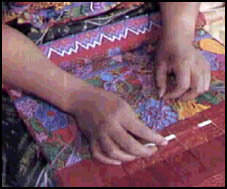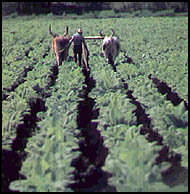 ECONOMY ECONOMY |
Guatemala's economy, the largest and most developed in the Central American region, has a Gross Domestic Product (GDP) nearing US$19 billion and has experienced average sustained growth rates of more than 4 per cent yearly since 1995.

Recent economic growth in Guatemala has been lead largely by exports of traditional exports that include coffee, bananas and sugar and by non-traditional exports such as assembled clothing, seasonal fruits and vegetables, handicrafts, and cut flowers. The non-traditional sector has experienced sustained double-digit growth rates and has provided employment and increased income for a growing number of Guatemalans since the 1980's. The Africa-CBI Trade Bill recently approved by the United States Congress, will provide Guatemala and the countries of the region additional access to the US market. Tourism continues its significant development and should continue to grow and provide the country with supplementary foreign income levels. "To position Guatemala as a tourist destination of international quality and to also convert the tourism sector as an instrument of economic, social, environmental and cultural development of the country", underlined Lucia Barreda de Hurtado sub-director of INGUAT. Remittances from family members abroad are a significant source of foreign exchange, accounting for perhaps as much as $600 million per year.
Agriculture and commerce are the dominant economic activities in Guatemala, with each contributing nearly 25 per cent of GDP. Manufacturing accounts for 15 per cent of GDP and Government nearly 10 per cent. Tourism is growing at an alarming rate and is expected to become the number 1 source of foreign exchange earners in the next few years.
| The country's primary manufactured products include textiles and clothing, cosmetics, glassware, and processed foods. Guatemala exports most of its manufactured products to the other Central American countries, Mexico and several Caribbean countries. Exports of low value-added products operating under the Drawback Industries Law (Decree 29-89) continue to increase and are expected to reach over US$400 million in 2000.

Even though tax revenues have traditionally been well under 10 per cent of GDP, the Government is committed to increasing revenues to a level of 12 per cent of GDP by the year 2002. The increase plays a key role in the Peace Accords signed between the Government and the Guatemalan National Revolutionary Unity (URNG) in 1996 that brought an end to the country's 36-year internal conflict. The increased funds are destined to fund social and economic development projects. As part of the Peace Process, the Government has pledged to substantially increase spending on social, infrastructure expansion, and economic development programs to benefit a greater segment of the country's population. Much of the financing for this additional spending will come from grants and loans provided by the international donor community, but Guatemala will have to generate an additional US$700 million in internal resources through increased and more efficient tax collection. The recently created Superintendence of Tributary Administration (SAT) established in October 1998, has improved tax collection levels (15 per cent increase in 1999) and has provided a more transparent and efficient public financial system. The functioning of SAT is greatly reducing costs, deterring corruption, and promoting a transformation in Government operations directly benefiting the delivery of social services to those that need it most. |

